Have you heard of Africa’s Great Rift Valley? It’s an incredible 4,300-mile-long landmark that astronauts say is Earth’s most visible detail from space. The Great Rift Valley is undoubtedly one of the world’s geological wonders. This article uncovers how and when the Great Rift Valley formed, what animals make it their home, and if it really will create a brand new continent.

Africa’s Great Rift Valley is visible from space.
©leolintang/Shutterstock.com
What Is Africa’s Great Rift Valley?
The Great Rift Valley refers to the East African Rift (the EAR) that runs through eastern Africa. The Great Rift Valley formed 25 million years ago through tectonic plate activity that’s still happening today. The African tectonic plate is gradually rifting (that is, pulling apart), and it’ll eventually form two new plates, which scientists call the Nubian and the Somali Plates.
It’s the longest rift on Earth’s surface, running 4,300 miles long and approximately 30-40 miles wide. It has steep cliff-like sides and amazing ecosystems. It’s difficult for us to comprehend just how huge the Great Rift Valley is.
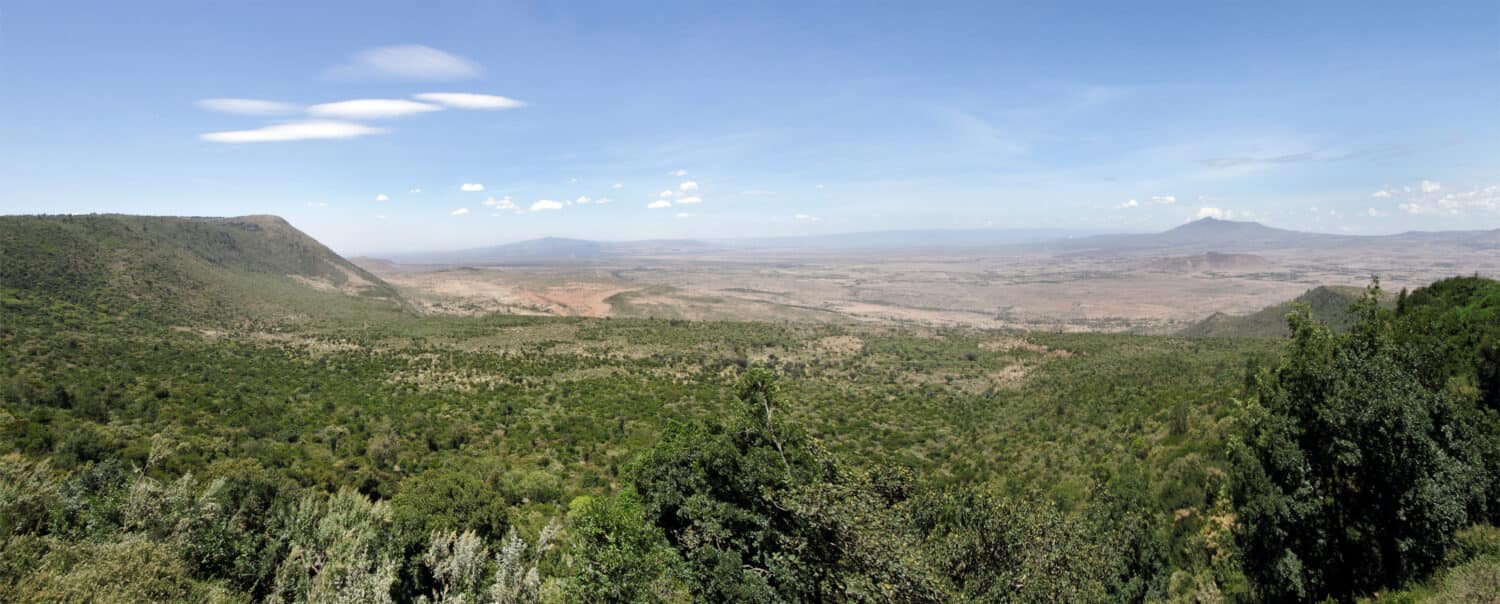
The Great Rift Valley started forming 25 million years ago
©Dr Ajay Kumar Singh/Shutterstock.com
Where Is It in Africa?
The entire 4,300-mile-long series of rifts runs from Asia to Southeast Africa’s Mozambique.
The epic rift begins in Jordan in the Middle East and follows the River Jordan into the Red Sea via the Gulf of Aqaba. It continues into Ethiopia’s Danakil Depression, and then close to Kenya, it splits.
- The eastern branch travels through Lake Rudolf and into Tanzania’s Lake Natron. It created two mountainous regions that divide Ethiopia and birthed 19,340-foot tall Mount Kilimanjaro, Africa’s tallest mountain.
- The western branch traces the Democratic Republic of the Congo, Uganda, Rwanda, Burundi, and Tanzania. It’s also called the Albertine Rift and contains the Rift Valley lakes.
The Great Rift split re-joins at Tanzania’s Lake Rukwa and rolls through Malawi to the coast of Mozambique.

The Great Rift Valley follows the Red Sea into Africa.
©iStock.com/vvvita
How Was the Great Rift Valley in Africa Formed?
The Great Rift Valley sits atop a place where three tectonic plates meet.
The rift was created by the Somali plate pulling away from the African continent, so the western part of Africa is pulling apart from the eastern part. This created a dip, a lowland region that increased over time. Eventually, at some point in the future, a sea will part the two African sides, and a new continent will emerge.
Is the Great Rift Valley Glacial?
Rift valleys are different from river or glacial valleys because they’re caused by tectonic plate action, not erosion.
For example, Norway’s incredible fjords were scraped out by glaciers 10,000 years ago, but the Great Rift Valley in Africa was created from tectonic plates below the Earth’s surface moving apart.
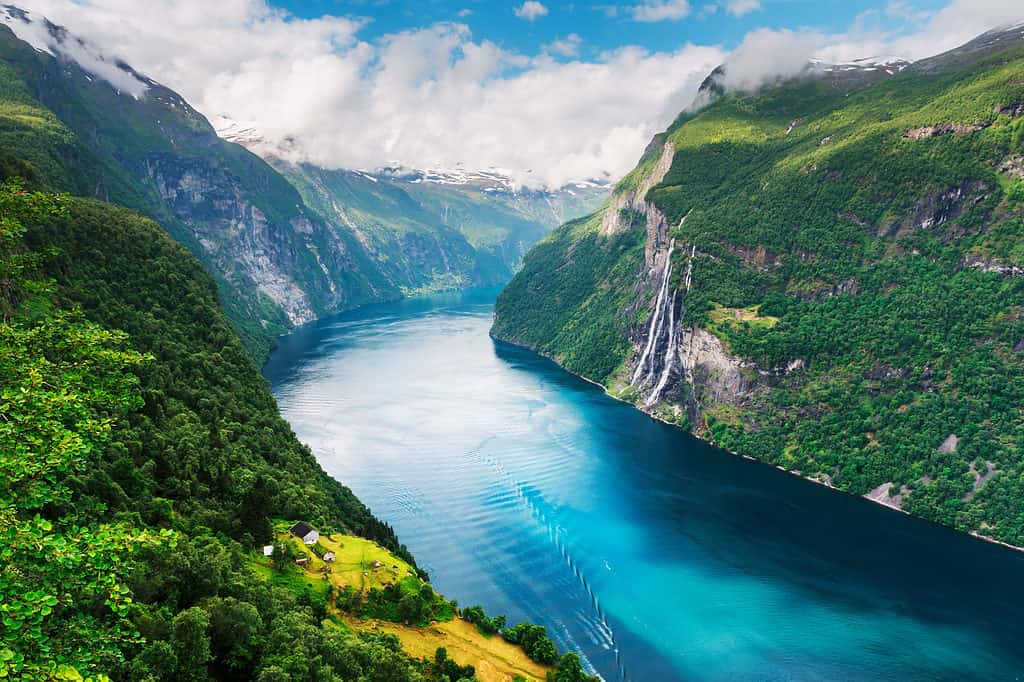
Norway’s fjords were created by glaciers scraping the surface, whereas the Great Rift Valley was formed from tectonic plate activity.
©iStock.com/Smitt
When Was the Great Rift Valley in Africa Formed?
Experts think the Great Rift started forming in the Miocene era over 25 million years ago, and major rifting action took place 2-7 million years ago in the Pliocene era. Around 10,000 years ago, volcanic activity and fault movement created even more change.
Some scientists suggest that major volcanic activity in the early days created such pressure in the Earth’s crust that the area dropped down, but others argue that plate compression forced it downwards. Either way, the Great Rift Valley is still moving apart, so technically, it’s both ancient and new.
What Does It Look Like?
Much of the valley is below sea level, and its topography varies widely. Some of the most incredible sights include plains, deserts, volcanos, mountains, and lakes. The Valley is home to 20 UNESCO World Heritage Sites, such as the Masai Mara and Kenya’s Lake System.
The wall-like cliffs (called escarpments) that margin the valley rise to 3,000 feet tall on average, but some escarpments, such as Kenya’s Mau Escarpment ridge, reach over 9,000 feet tall. That’s even taller than the Golden Gate Bridge standing upright!
Here’s some of the epic Great Rift Valley’s topography:
Mountains
Snow-capped mountains that front the Rift Valley’s ridge include epic heights such as Mount Kilimanjaro, Mount Margherita, and Mount Kenya.
Animals that live in the Great Rift Valley’s mountain margins include gorillas, blue monkeys, white-necked ravens, colombus monkeys, bush babies, puff adders, civets, servals, and chameleons.

Kilimanjaro in Tanzania was created by volcanic activity.
©Paul Hampton/Shutterstock.com
Lakes
Thirty lakes run along the Great Rift Valley. The Great Lakes are the largest and best known. They include Lake Tanganyika, Africa’s deepest lake and the second-deepest lake in the world. Experts estimate it’s 20 million years old.
Another great lake of note is Lake Victoria. This incredible lake is 26,560 square miles with a 2,138-mile long shoreline. Approximately three thousand islands dot its space, and many people inhabit them. Both lakes are incredible ecosystems and important foraging sites.
Animals that live in the lakes include vivid cichlid fish, lesser flamingos, great white pelicans, plus visiting cheetahs, black rhinos, Rothschild’s giraffe, lions, wild dogs, and greater kudus.
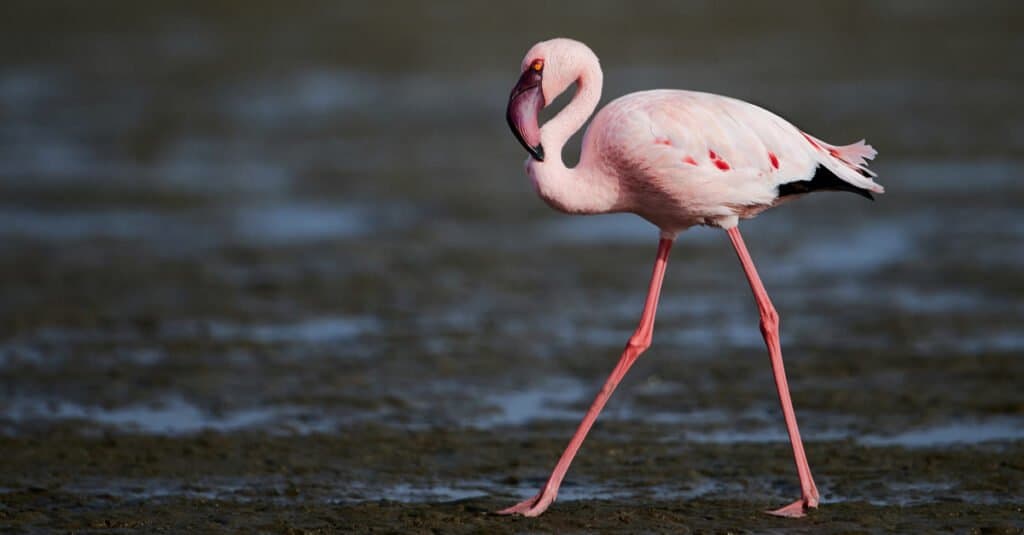
Lesser flamingos live in the Great Rift Valley’s lake system.
©mikex4/Shutterstock.com
Deserts
Ethiopia’s desert regions are burnt, cracked, vast open areas where new rifts open frequently to emit gases from Earth’s bubbling magma below. Not much lives here, but as is often the case, a few find a way.
Animals that live in the Rift Valley’s deserts include desert eagle owls, scorpions, and vipers.
Plains
The Maasai Mara is probably the best-known plain in Africa’s Great Rift Valley. It includes vast open grasslands, humid riverine forests, swamps, thickets, escarpments, and drought-proof acacia woodland.
Animals that live in the plains include elephants, leopards, black rhinos, hyenas, warthogs, buffalo, cheetahs, zebra, lions, and giraffes.
The Maasai Mara hosts two million wildebeest on annual migration and the world’s largest savanna species population. Over 2.5 million savanna species live there alongside 500 bird species. Incredible.
Most of the epic African wildlife we admire has made a home in the Great Rift Valley. There’s so much environmental variety that thousands of animal species thrive there.
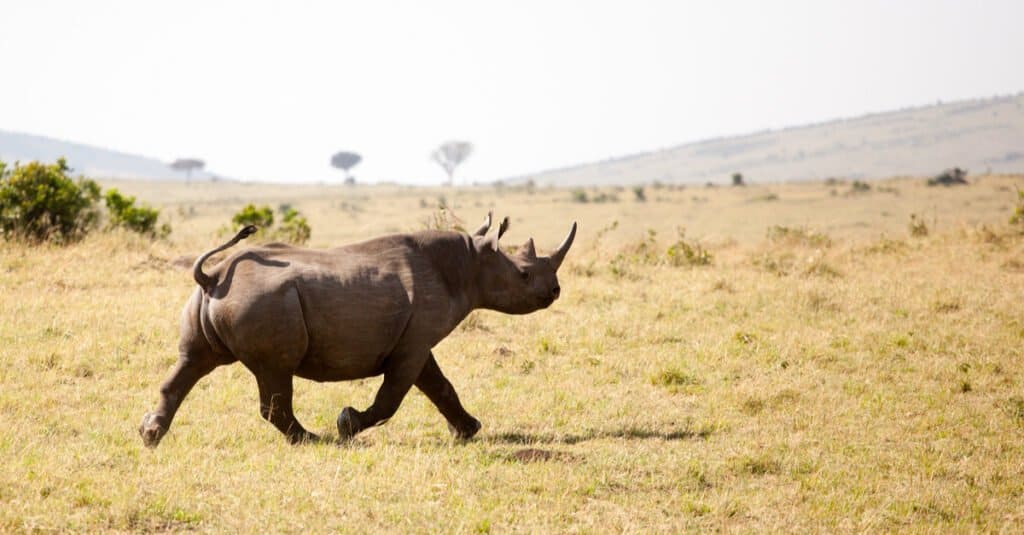
Endangered black rhinos live in the Maasai Mara’s savannas.
©Anya Newrcha/Shutterstock.com
What Is Tectonic Plate Action?
The Great Rift Valley in Africa was created by incredibly powerful tectonic plate activity.
Tectonic plates are large sections of the Earth’s crust that push and pull against each other, causing earthquakes and volcanos. When they move, we call it tectonic action.
The action of three tectonic plates in Africa caused many volcanic eruptions, one of which created the incredible Mount Kilimanjaro!
Do Humans Live in the Great Rift Valley?
Some archaeologists believe the Great Rift Valley may be the cradle of civilization, which means they think the earliest humans lived there. In 1974, in Ethiopia’s Awash Valley, paleontologists uncovered “Lucy,” a three million-year-old female skeleton of an early human. Paleontologists speculate the rift’s vast array of ecosystems created diverse environments that allowed all types of life to flourish. Including us!
Today, tribal groups inhabit the rift. 1,500 Hadza members live in the central rift and north-central Tanzania. These groups hunt wild animals, forage for fruit, and collect water every day.
Tourists interested in the animals and geology of the Great Rift Valley spend time on organized excursions, called safaris, in the national parks, lake systems, and mountains. Tourism is profitable and supports the African economy, but some say it’s destroying this amazing landscape.
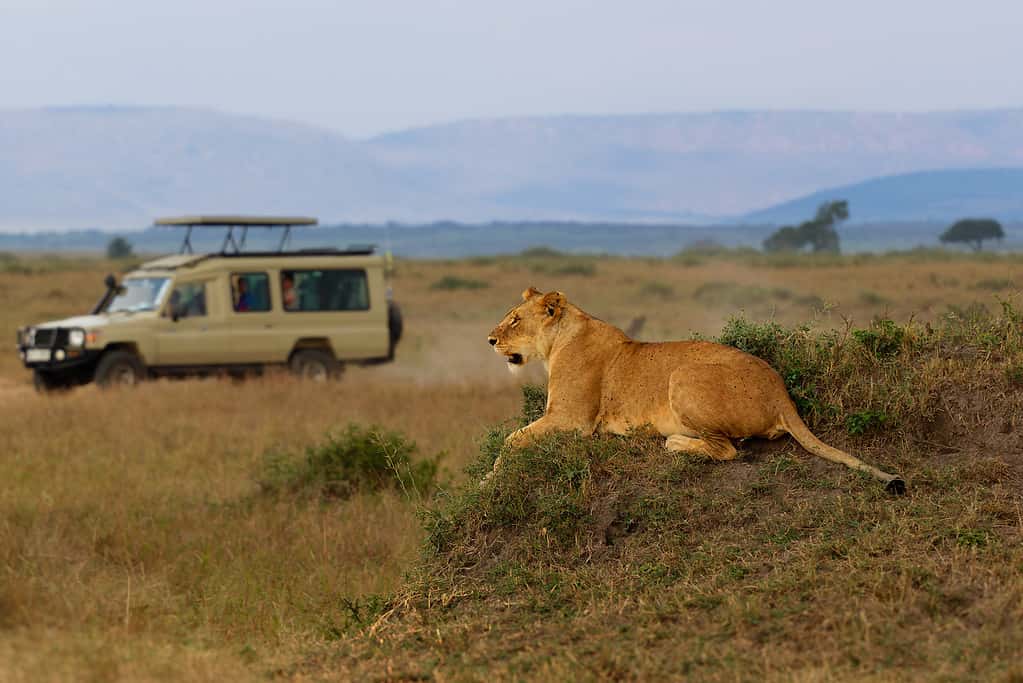
Tourists can visit the Great Rift Valley’s ecosystems on organized safaris.
©iStock.com/phototrip
How and When the Great Rift Valley Was Formed: Recap
So, we’ve learned that Africa’s Great Rift Valley is a huge expanse of plains, lakes, and desert ecosystems edged with mountains that were created 25 million years ago by tectonic plate action beneath the Earth’s crust.
But the Great Rift hasn’t finished its work yet — it’s still pulling apart.
Experts think the western section moves half an inch annually, so eventually, the western side of Africa pulling away will create a new continent with a newly born sea running between the two. However, the tectonic plates aren’t in a rush. The new continent could take five to 10 million years!
The photo featured at the top of this post is © JordiStock/Shutterstock.com
Thank you for reading! Have some feedback for us? Contact the AZ Animals editorial team.






